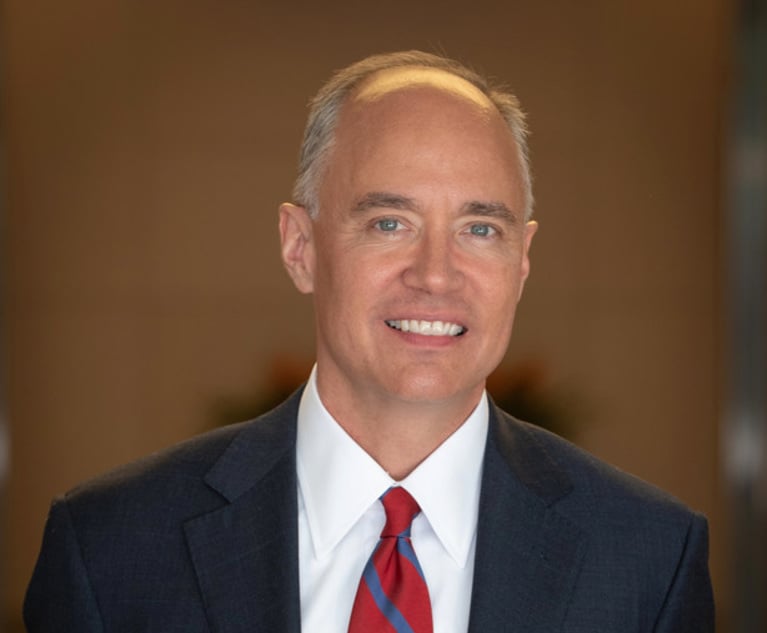Three states and a handful of cities and counties have objected to a plan that would estimate the total value of legal claims against bankrupt opioid manufacturer Insys Therapeutics Inc.
Insys, which filed for Chapter 11 bankruptcy protection June 10, filed a motion to estimate the costs of about 1,000 lawsuits brought against the Phoenix-based company over the opioid crisis. The procedure would preserve funds and “fix aggregate amounts of particular categories of claims on an expedited basis,” according to the motion.
But a hodgepodge of plaintiffs suing Insys, such as the states of Florida, New Jersey and New York, filed objections Tuesday insisting that the plan was premature and procedurally improper and would reduce their potential compensation without due process.
“The debtors ask this court and all of their many creditors, including sovereign governmental entities such as the state, to go through a truncated, procedurally backward, and ludicrously expensive estimation process,” wrote Florida Attorney General Ashley Moody. “Rather, the estimation motion is a clear attempt by the debtors to reduce their liabilities without affording any due process to claimants.”
A hearing on the plan is set for July 2.
Insys is one of several manufacturers of opioids, a class of drugs that includes prescription painkillers tied to increasing deaths and addictions nationwide. Several Insys executives, including founder John Kapoor, have been convicted of racketeering and other crimes related to the opioid crisis.
An Insys spokesman declined to comment.
Insys, which also sought injunctive relief to stay hundreds of active opioid cases, brought its estimation procedure under section 502(c) of the U.S. Bankruptcy Code, which allows a debtor to estimate unliquidated claims that “would unduly delay the administration of the case.”
The company has put its bankruptcy on a fast track, with an asset sale planned for August.
“Waiting for approximately 1,000 individual cases, many of which are still in their nascent stages, or have yet to be filed, to be resolved will impede the debtors' ability to formulate, confirm, and implement a plan and could drain the debtors' estates of tens of millions of dollars—materially reducing the value of these estates and creditor recoveries,” the motion says. “Given the volume of claims, litigating each of them would unduly delay administration of the debtors' estate, potentially by years, if it were necessary to reduce all of them to a final judgment.”
The procedure would estimate actual and compensatory damages, and other compensation, for a wide range of cases brought by cities and other municipalities, such as Native American tribes and counties, as well as states, personal injury plaintiffs and insurance providers.
Attorneys general in 10 other states would be subject to the procedure.
In an objection Tuesday, Moody called the procedure a “monumental waste of precious resources,” particularly given uncertainties over whether there would be any assets to distribute. The “truncated and unrealistic time schedule” would be unfair to claimants, whose claims would be “arbitrarily reduced,” she wrote.
“These timeframes would be considered highly aggressive in a normal contested matter, but here, these deadlines are completely unrealistic and unneeded,” she wrote. “There is no reason to force such a truncated schedule on claimants other than to put them at a disadvantage in this case.”
Kylie Mason, a spokeswoman for Moody's office, declined to comment.
New Jersey and New York joined Florida's objection.
Hundreds more cases pending against Insys, mostly by cities and counties, have been stayed in the multidistrict litigation before U.S. District Judge Dan Polster, of the Northern District of Ohio. Two of them are set to go to trial Oct. 21 and name Insys and several other opioid companies as defendants.
Lead plaintiffs attorneys in those cases, in a separate objection Tuesday, called the procedure a “flawed strategy for these cases.” They raised additional concerns about how Insys would use the estimated values of the cases, particularly if other opioid companies filed for bankruptcy.
Instead, they wrote, Insys should go through its asset sale and then put the proceeds into a liquidating trust.
Another objection came from two cities in Arizona and counties of Maryland and Missouri, who called the procedure a “complex sleight of hand.”
“Debtors have essentially proposed eliminating all of claimants rights without any regard to due process or the merits of their claims,” wrote Eric Fromme of Theodora Oringher in Costa Mesa, California. “Adoption of debtors' proposal would prevent claimants' meaningful discovery to determine a fair value of their claims.”
Another filing came from lawyers who brought class actions in 25 states on behalf of individuals who alleged the opioid crisis caused their health insurance premiums to skyrocket. The class actions are in states including California, Connecticut, Florida, New Jersey, New York, Pennsylvania and Texas.
While not objecting to the Insys estimation motion, lawyers in the class actions want their clients to be included as a category of claims.
“The details of how this is going to work are very important, and it can't be jammed through,” said one of them, Joe Huston, of Stevens & Lee in Wilmington, Delaware.
This content has been archived. It is available through our partners, LexisNexis® and Bloomberg Law.
To view this content, please continue to their sites.
Not a Lexis Subscriber?
Subscribe Now
Not a Bloomberg Law Subscriber?
Subscribe Now
NOT FOR REPRINT
© 2024 ALM Global, LLC, All Rights Reserved. Request academic re-use from www.copyright.com. All other uses, submit a request to [email protected]. For more information visit Asset & Logo Licensing.
You Might Like
View All
Revisiting the Boundaries Between Proper and Improper Argument: 10 Years Later
8 minute read
'Serious Disruptions'?: Federal Courts Brace for Government Shutdown Threat
3 minute read
Uber Not Responsible for Turning Over Information on 'Dangerous Riders' to Competitor, Judge Finds
5 minute read
Infant Formula Judge Sanctions Kirkland's Jim Hurst: 'Overtly Crossed the Lines'
4 minute readTrending Stories
Who Got The Work
Michael G. Bongiorno, Andrew Scott Dulberg and Elizabeth E. Driscoll from Wilmer Cutler Pickering Hale and Dorr have stepped in to represent Symbotic Inc., an A.I.-enabled technology platform that focuses on increasing supply chain efficiency, and other defendants in a pending shareholder derivative lawsuit. The case, filed Oct. 2 in Massachusetts District Court by the Brown Law Firm on behalf of Stephen Austen, accuses certain officers and directors of misleading investors in regard to Symbotic's potential for margin growth by failing to disclose that the company was not equipped to timely deploy its systems or manage expenses through project delays. The case, assigned to U.S. District Judge Nathaniel M. Gorton, is 1:24-cv-12522, Austen v. Cohen et al.
Who Got The Work
Edmund Polubinski and Marie Killmond of Davis Polk & Wardwell have entered appearances for data platform software development company MongoDB and other defendants in a pending shareholder derivative lawsuit. The action, filed Oct. 7 in New York Southern District Court by the Brown Law Firm, accuses the company's directors and/or officers of falsely expressing confidence in the company’s restructuring of its sales incentive plan and downplaying the severity of decreases in its upfront commitments. The case is 1:24-cv-07594, Roy v. Ittycheria et al.
Who Got The Work
Amy O. Bruchs and Kurt F. Ellison of Michael Best & Friedrich have entered appearances for Epic Systems Corp. in a pending employment discrimination lawsuit. The suit was filed Sept. 7 in Wisconsin Western District Court by Levine Eisberner LLC and Siri & Glimstad on behalf of a project manager who claims that he was wrongfully terminated after applying for a religious exemption to the defendant's COVID-19 vaccine mandate. The case, assigned to U.S. Magistrate Judge Anita Marie Boor, is 3:24-cv-00630, Secker, Nathan v. Epic Systems Corporation.
Who Got The Work
David X. Sullivan, Thomas J. Finn and Gregory A. Hall from McCarter & English have entered appearances for Sunrun Installation Services in a pending civil rights lawsuit. The complaint was filed Sept. 4 in Connecticut District Court by attorney Robert M. Berke on behalf of former employee George Edward Steins, who was arrested and charged with employing an unregistered home improvement salesperson. The complaint alleges that had Sunrun informed the Connecticut Department of Consumer Protection that the plaintiff's employment had ended in 2017 and that he no longer held Sunrun's home improvement contractor license, he would not have been hit with charges, which were dismissed in May 2024. The case, assigned to U.S. District Judge Jeffrey A. Meyer, is 3:24-cv-01423, Steins v. Sunrun, Inc. et al.
Who Got The Work
Greenberg Traurig shareholder Joshua L. Raskin has entered an appearance for boohoo.com UK Ltd. in a pending patent infringement lawsuit. The suit, filed Sept. 3 in Texas Eastern District Court by Rozier Hardt McDonough on behalf of Alto Dynamics, asserts five patents related to an online shopping platform. The case, assigned to U.S. District Judge Rodney Gilstrap, is 2:24-cv-00719, Alto Dynamics, LLC v. boohoo.com UK Limited.
Featured Firms
Law Offices of Gary Martin Hays & Associates, P.C.
(470) 294-1674
Law Offices of Mark E. Salomone
(857) 444-6468
Smith & Hassler
(713) 739-1250







